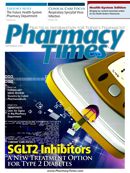Publication
Article
Pharmacy Practice in Focus: Health Systems
Sivextro by Cubist Pharmaceuticals
Author(s):
On June 20, 2014, the FDA announced approval of Sivextro (tedizolid phosphate), an oxazo-lidinone-type antibiotic for intravenous use and oral use in the treatment of acute bacterial skin and skin structure infections (ABSSSI).1-3 Sivextro should only be used in skin infections that are thought to be caused by bacteria. Use in patents with neutropenia has not been evaluated. Use of Sivextro is associated with some risk of Clostridium difficile infection.2
Mechanism of Action
Sivextro works by binding to the 50S bacterial ribosome, inhibiting the formation of proteins in bacteria, and exerts bacteriostatic effects against enterococci, staphylococci, and streptococci. The antibacterial effects of Sivextro are limited to gram-positive organisms, including Staphylococcus aureus, Streptococcus pyogenes, Streptococcus agalactiae, Streptococcus anginosus, and Enterococcus faecalis.2
Dosage and Administration
Each 200-mg tablet of Sivextro may be taken daily with or without food for a total of 6 days. An intravenous version of Sivextro is also available for daily infusion in patients who are not able to take Sivextro orally. No dosage adjustment is required in patients with hepatic or renal impairment.2
Clinical Trials
In clinical trials, scientists evaluated the safety and efficacy of Sivextro in a total of 1315 adults with ABSSSI over the course of 2 trials examining the comparative efficacy of linezolid 600 mg taken every 12 hours for 10 days versus Sivextro 200 mg daily for 6 days.2,4,5
In the first trial, patients with cellulitis, major wound infections, or major cutaneous abscesses received oral tablets of Sivextro at a dosage of 200 mg daily for 6 days. Some patients received gram-negative bacteria coverage with aztreonam or metronidazole or both medications.2,4
Patients were randomized in an approximately 1:1 ratio to oral linezolid (n = 326) or oral Sivextro (n = 323). Investigators monitored clinical response to treatment by the percentage of patients with a body temperature no greater than 100°F and no increase in the area of the cellulitis lesions 2 to 3 days after the first medication dose. Of the intent-to-treat population treated with Sivextro, 85.8% experienced clinical response versus 85.6% of patients receiving linezolid, proving noninferiority. Measuring the response of evaluable patients only, investigators determined that clinical response occurred in 95.2% of patients in both groups.2,4
In the second trial, patients were randomized in an approximately 1:1 ratio to receive either intravenous Sivextro (n = 332) or intravenous linezolid (n = 334) with background antibiotic therapy for gram-negative bacteria. A clinical response was defined as a 20% or greater decrease in the area of the cellulitis lesion within 2 to 3 days. Of the intent-to-treat population treated with intravenous Sivextro, 88% experienced clinical response versus 87.7% of patients receiving intravenous linezolid, proving noninferiority. In evaluable patients alone, 85.2% of patients receiving Sivextro and 82.6% of patients receiving linezolid responded to treatment.2,5
Sivextro is effective against gram-positive organisms, including methicillin-resistant Staphylococcus aureus (MRSA). In clinical trials, approximately 80% of patients with ABSSSI due to MRSA experienced a clinical response with use of Sivextro.2
Warnings and Precautions
No clinically relevant drug interactions were identified in studies of cytochrome P450 enzyme interactions, although in vitro studies indicate that Sivextro reversibly inhibits the enzyme monoamine oxidase. The possible interaction between monoamine oxidase inhibitors and Sivextro has not been evaluated in clinical studies, although an enhanced pressor response was observed when either tyramine or pseudoephedrine were coadministered with Sivextro.2
As no adequate studies have been carried out with Sivextro in pregnant women, Sivextro is a Pregnancy Category C medication.2
Common adverse events associated with Sivextro use include nausea, headache, diarrhea, vomiting, and dizziness, each of which occurred in ≥2% of patients treated in clinical trials. Myelosuppression may occur with treatment extending beyond the recommended 6-day course of therapy. Rarely, peripheral neuropathy and optic nerve disorders have been reported. For a complete discussion of potential adverse events and drug interactions with Sivextro, please consult the product package insert.2
Michael R. Page, PharmD, RPh, earned his doctor of pharmacy degree at the Ernest Mario School of Pharmacy at Rutgers, The State University of New Jersey.
References
- FDA approves Sivextro to treat skin infections [press release]. FDA website. www.fda.gov/NewsEvents/Newsroom/PressAnnouncements/ucm402174.htm. Accessed July 2014.
- SIVEXTRO (tedizolid phosphate) [package insert]. Lexington, MA: Cubist Pharmaceuticals; 2014.
- National Heart, Lung, and Blood Institute. PubChem database. http://pubchem.ncbi.nlm.nih.gov. Accessed July 2014.
- Prokocimer P, De Anda C, Fang E, Mehra P, Das A. Tedizolid phosphate vs linezolid for treatment of acute bacterial skin and skin structure infections: the ESTABLISH-1 randomized trial. JAMA. 2013;309(6):559-569.
- Moran GJ, Fang E, Corey GR, Das AF, De Anda C, Prokocimer P. Tedizolid for 6 days versus linezolid for 10 days for acute bacterial skin and skin-structure infections (ESTABLISH-2): a randomised, double-blind, phase 3, non-inferiority trial. Lancet Infect Dis. 2014;14(8):696-705.







